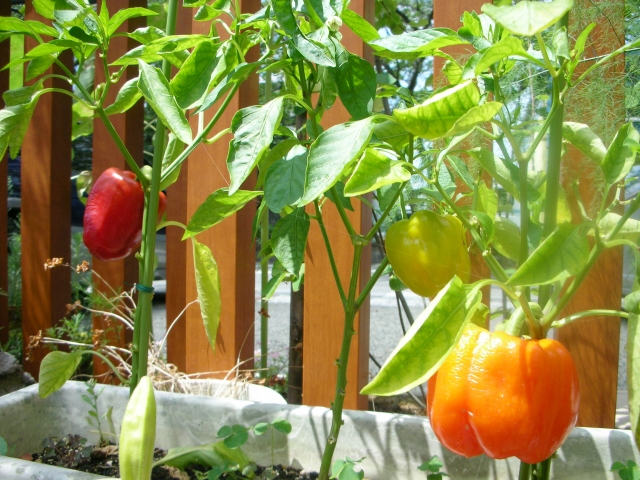
Bell peppers are more colorful and sweeter than regular green peppers.
Although they are often perceived as a bit pricier and more luxurious, bell peppers are also more nutritious than green peppers. Knowing this makes you want to grow them from seeds, right? (Haha)
So, let’s introduce how to grow bell peppers from seeds.
Is it difficult to grow tomatoes from seeds? Methods for germinating tomatoes from seeds

- Collecting Bell Pepper Seeds
- Planting Bell Pepper seeds using milk cartons
- Cover the planted Bell Pepper seeds with soil
- Bell Pepper seeds have successfully germinated one week after planting
- Two weeks after germination: Bell Peppers thriving and spreading their cotyledons energetically!
- One month after germination: The Bell Pepper seedlings have grown to a size suitable for transplanting
- Two months after germination, the Bell Peppers have finally started to bloom
- Three months after germination, the Bell Peppers finally have fruit
- You can grow Bell Peppers from seeds
Collecting Bell Pepper Seeds
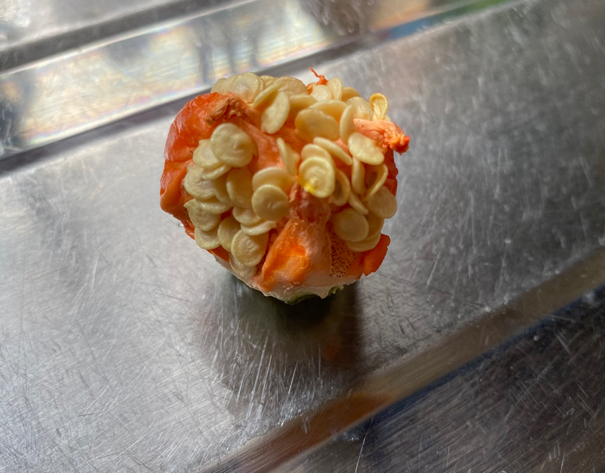
First, collect bell pepper seeds.
Just like with green peppers, bell peppers have many seeds concentrated near the stem.
The germination rate is high, so collecting a decent amount should be sufficient.
Even if you germinate 20-30 seeds, you’ll likely end up keeping only 1-2 plants. Therefore, it might feel a bit wasteful to germinate too many seeds.
Planting Bell Pepper seeds using milk cartons
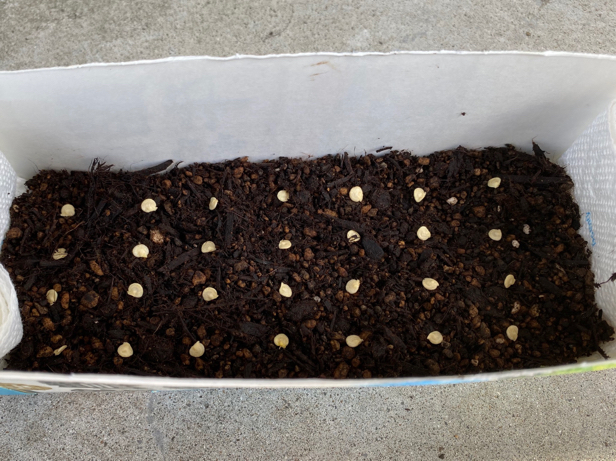
In the previous session on growing tomatoes from seeds, I encountered several instances where the roots of the germinated seeds intertwined with the paper towel, damaging the seedlings during transplanting. Therefore, I decided to germinate the pepper seeds in soil, considering their delicate roots.
For those who don’t have soil on hand but want to try it, you can use water-soaked paper towels and place the seeds on them.
When using paper towels, it’s recommended to tear the paper towel along with the roots during transplanting to avoid cutting them.
This time, I planted a total of 28 seeds. How many will germinate?
Cover the planted Bell Pepper seeds with soil
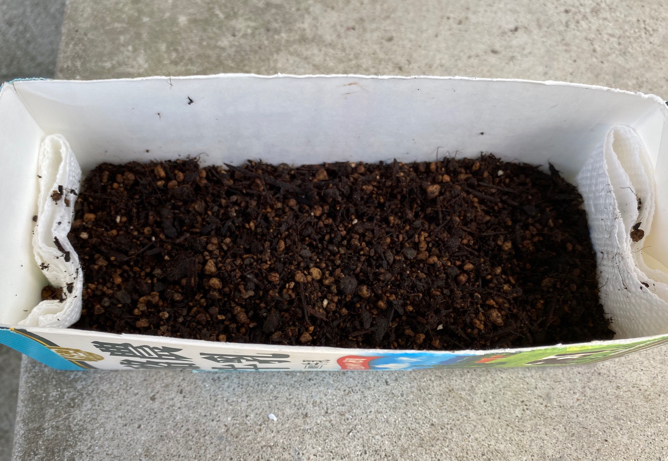
Once you have finished planting, cover the pepper seeds with soil and water them.
Peppers are light-sensitive seeds, so after lightly covering them with soil, place them in a location away from direct sunlight.
Difference Between Photoblastic Seeds and Scotoblastic SeedsPhotoblastic Seeds (Light-Dependent Seeds)
-
- Requirement of Light: Light is necessary for germination.
- Examples: Lettuce, carrots, chamomile, etc.
- Cultivation: These seeds need to be sown shallowly or on the soil surface. If buried too deep, they may not receive enough light for germination.
Scotoblastic Seeds (Light-Insensitive Seeds)
-
- Requirement of Light: Germination does not require light; rather, darkness is preferable.
- Examples: Tomatoes, cucumbers, corn, etc.
- Cultivation: These seeds should be covered firmly with soil to provide a dark environment for germination. Typically, they are sown to a depth of about 1-2cm.
With the tomato seeds, which are also photophobic, I placed them on a piece of kitchen paper in a dark spot, but it wasn’t always in complete darkness as it was kept indoors in a regularly lit room.
When it comes to light, it’s important not to fret too much, thinking about it as sunlight.
If you’re gardening at a hobby level rather than for commercial purposes, you don’t need to be overly obsessive.
Since I’m using milk cartons this time, for those concerned, covering them with aluminum foil or something similar from above would be a good idea.
Bell Pepper seeds have successfully germinated one week after planting
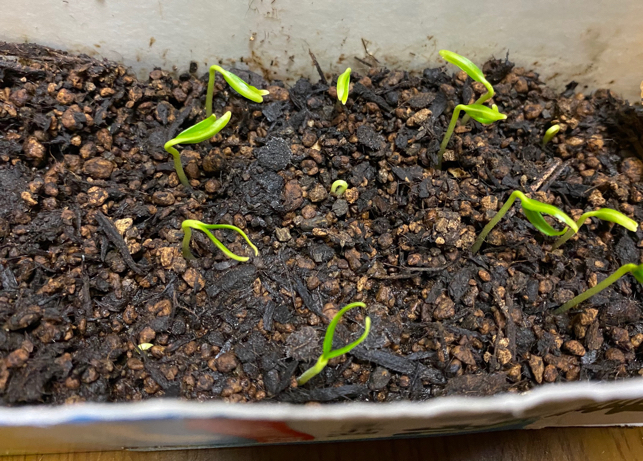
Successfully germinated after one week of sowing Bell Pepper seeds. Although not all are visible in the picture, out of the 28 seeds sown, 20 have sprouted, resulting in a current germination rate of 71%.
There’s a possibility that more seeds have germinated beneath the soil. The germination rate of pepper seeds seems quite impressive!
As mentioned during the transplanting of tomato seedlings grown from seed, there’s a significant difference in growth between continuing to grow them in makeshift containers like milk cartons versus using nursery pots.
While I’ve planted them in shallow soil instead of growing them solely in water, the amount of soil is still not sufficient. Hence, transplanting them into larger containers sooner rather than later should help promote further growth.
Two weeks after germination: Bell Peppers thriving and spreading their cotyledons energetically!
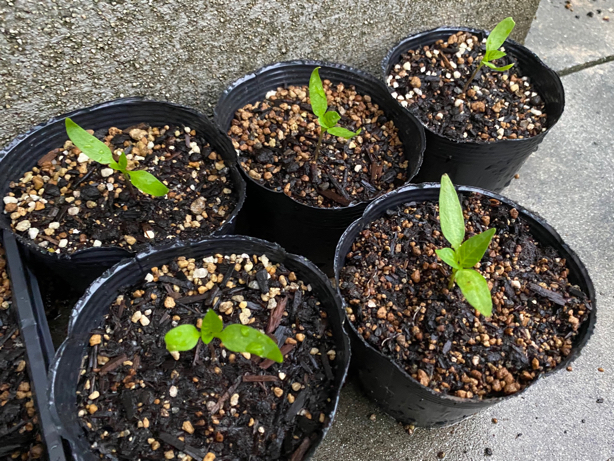
Despite consecutive heavy rains, the bell pepper seedlings germinated from seeds are thriving, spreading their cotyledons vigorously.
As I mentioned during the transplanting timing for tomato seedlings, the same trend applies to bell peppers. There’s a significant difference in growth speed between seedlings left in milk cartons and those transferred to seedling trays.
Considering the high germination rate, it would be less labor-intensive to sow the seeds directly into seedling trays and thin them out as needed.
For home gardening purposes, having 2-3 robust seedlings should suffice, so preparing the required number of seedling trays and sowing the seeds should do the trick.
One month after germination: The Bell Pepper seedlings have grown to a size suitable for transplanting
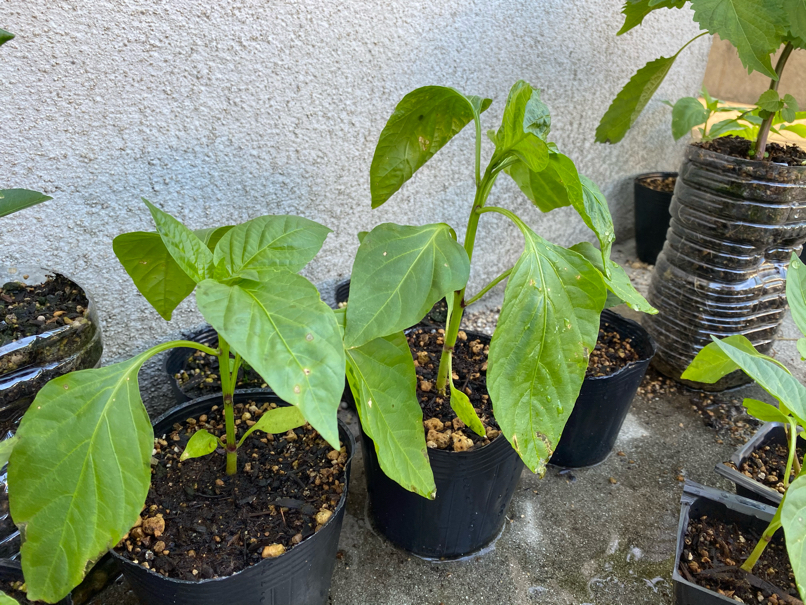
One month after germination, the bell peppers have grown to about 20cm in height. They seem to be growing slightly elongated, but overall, they are developing nicely.
Since I started growing them at an odd time, it’s about time to transplant them into planters; otherwise, there’s a risk of ending up with no harvest. With more soil, their growth speed should increase significantly, so I’ll transplant them into planters soon.
Two months after germination, the Bell Peppers have finally started to bloom
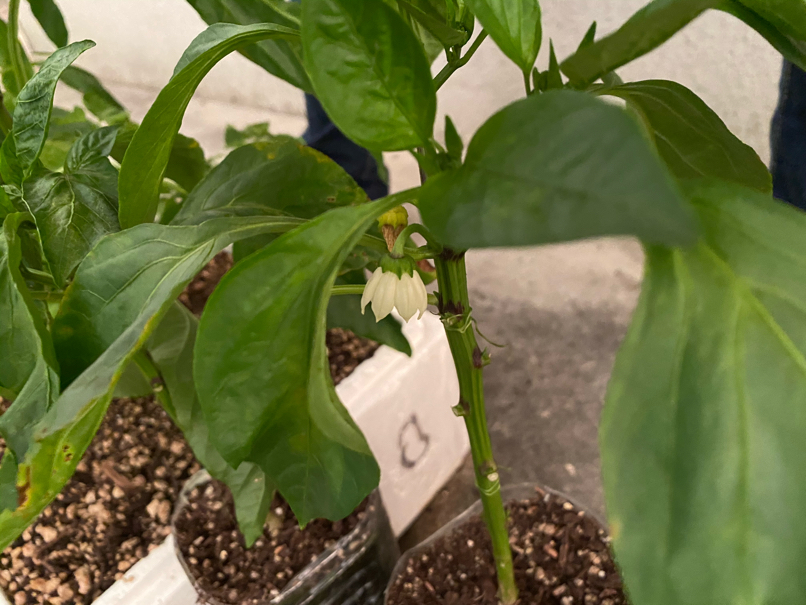
Two months after germination, we finally have a bloom! So far, only one flower has appeared, but most of the plants have buds forming.
However, we’ll have to pinch off this first flower to encourage overall plant growth. It’s a shame to remove such a pretty bloom, isn’t it? It’s already the end of August…
The season will soon begin to change to autumn in Japan. Will we make it to harvest?
Three months after germination, the Bell Peppers finally have fruit
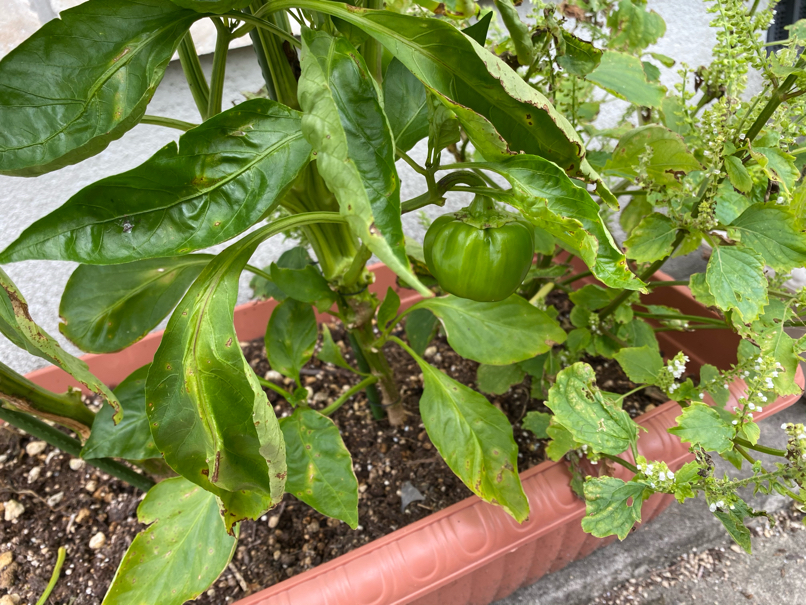
Three months have passed since germination.
Although flowers have been blooming for the past month, we were worried as there were no signs of fruit. Finally, we have some fruit, but only four on one out of the six plants we planted.
I wonder what will happen to the other plants… It’s already the end of September, and with temperatures dropping in Japan, I’m concerned that their growth might slow down.
You can grow Bell Peppers from seeds
This time, I introduced the method of growing bell peppers from seeds.
While bell peppers may seem expensive compared to green peppers, if successful, you can harvest nearly 50 fruits from a single plant.
Since this is a challenge starting from seeds, it’ll be exciting to see how much we can harvest.
Why not try planting bell pepper seeds when cooking with them?
Is it difficult to grow tomatoes from seeds? Methods for germinating tomatoes from seeds

How to take seeds of ripe cucumber

How to make seedlings of the sweet potato



コメント